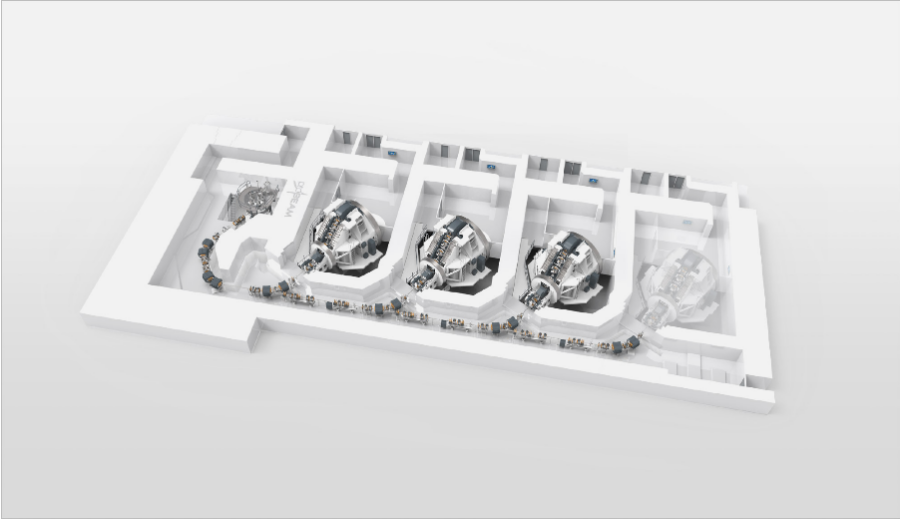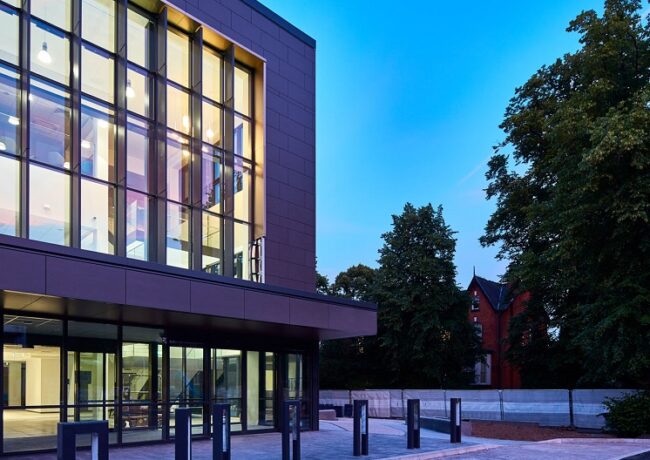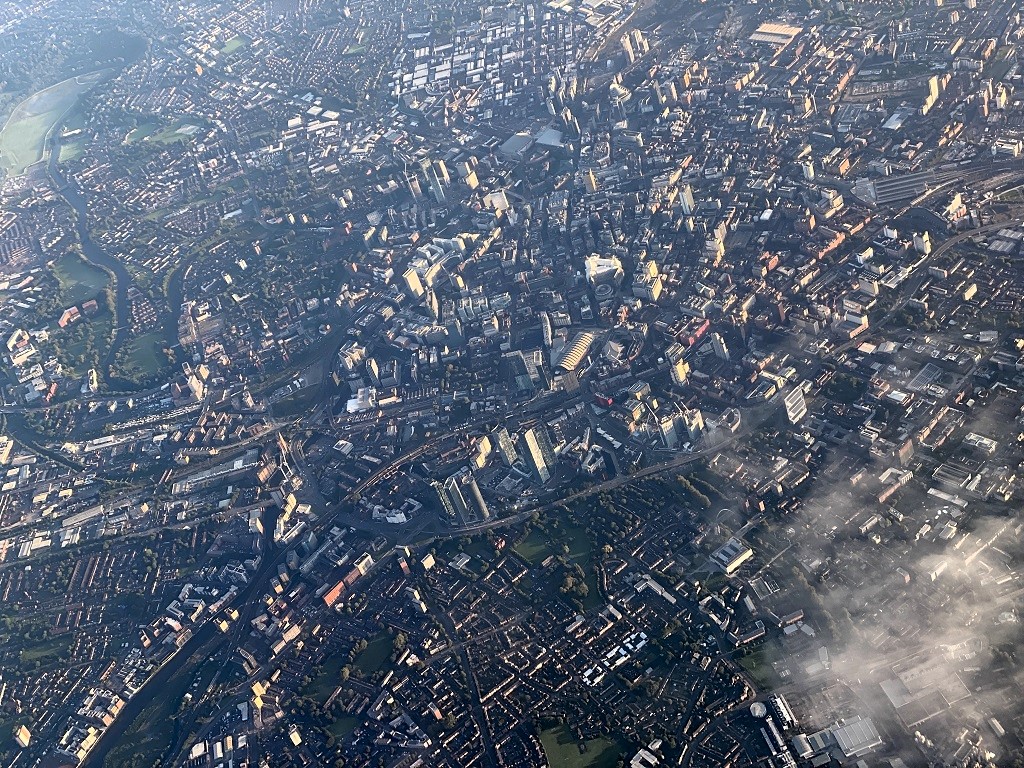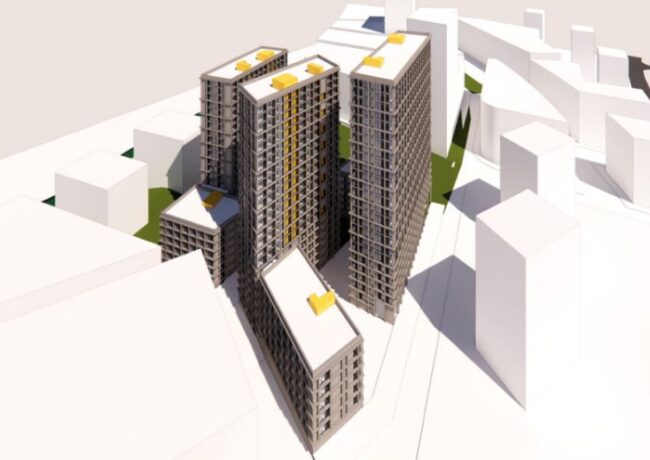REVIEW | The Christie Proton Beam Therapy Centre
A Proton Beam Therapy Centre at The Christie which recently opened to its first patients was crowned Greater Manchester’s Building of the Year by the Chamber of Commerce last week. Squaring off against rivals such as No1 Spinningfields, Ordsall Chord, and Mackie Mayor, what makes the facility so special?
The challenge facing the judges of the Building of the Year Awards is that the criteria is broad – the building is voted on based on what it gives back to the community, rather than design merits, cost, construction methods, or history. The winning building may have all or some of these, plus its own distinct value.
Each building on the shortlist this year presented a different positive. Muse’s Timekeeper’s Square brought rows of contextually-appropriate townhouses to Salford, designed by Buttress, and commercially have been a roaring success with the homes selling on for more than £400,000. At Mackie Mayor, a long-disused historic property was restored and is now an incredibly popular restaurant and bar. Ordsall Chord is an impressive piece of transport infrastructure which, once fully operational, will be a core link for train routes across not just Manchester city centre, but the North. Allied London’s No1 Spinningfields has been one of the biggest changes to Manchester’s skyline in recent years, bringing 170,000 sq ft of office space and providing a new home for major companies such as PwC and WeWork. Next door, The Pavilion, set to be the venue for Manchester’s first Ivy, is a new style to grace the glass-dominated Spinningfields – a wooden slatted, plant draped building which will no doubt become the venue du jour when construction is complete.
However, while as a medical building its external design can’t be described as much more than cleanly functional, at The Christie’s recently opened Proton Beam Therapy Centre, it’s the work on cancer treatment which goes on inside, and the infrastructure needed to enable it, which is truly staggering and no doubt persuaded the Chamber judges.
In order for the 200-tonne proton beam machines to work (and the Therapy Centre has three for treating patients, and a fourth as a test area), they need to be able to rotate around 360 degrees. That means the building is built around four massive gantry spaces, with walls as thick as six metres in places, which was delivered through 17,000m3 of concrete and 1,700 tonnes of reinforcement by contractor Interserve. Wiring runs through 10 km of pipes, checked for any blockages beforehand using, appropriately, endoscope cameras. Should the machines ever need to be lifted out, the roof above is air-tight but removable, structured in a way reminiscent of Jenga.

Arup engineered the Proton Beam Therapy Centre and managed detailed Building Information Modelling process
Images of the inside of the hospital are scarce due to privacy requirements, however being faced by the central, circular treatment space of the proton beam machine, with its associated corridors and control rooms, is best described as like being on the set of Star Gate. The sheer amount of detail and engineering required to treat one patient is immense. A patient is placed on a platform in the centre of the machine, at a subtly-adjusted position and angle calculated beforehand to ensure that the proton beam hits any tumour at a sub-milimetre accuracy. That’s why proton beam therapy is being praised as so groundbreaking – it minimises the damage of healthy tissue around a tumour, which is critical in delicate areas like the spine, brain, or for small children who are still developing.
Proton beam therapy is a vast scientific exercise delivering on a medical need. Essentially at the centre of the machine is a particle accelerator, and a lot of the surrounding structure is focused on radiation protection. The corridors and piping around the treatment rooms twist at 90 degree angles so that any renegade neutrons, travelling only in straight lines, never escape.
While arguably it’s what the structure contains that has the impact, rather than the building itself, that’s true for most properties; the best should be judged on how well they deliver on their core purpose, and The Christie Proton Beam Therapy Centre certainly delivers.




